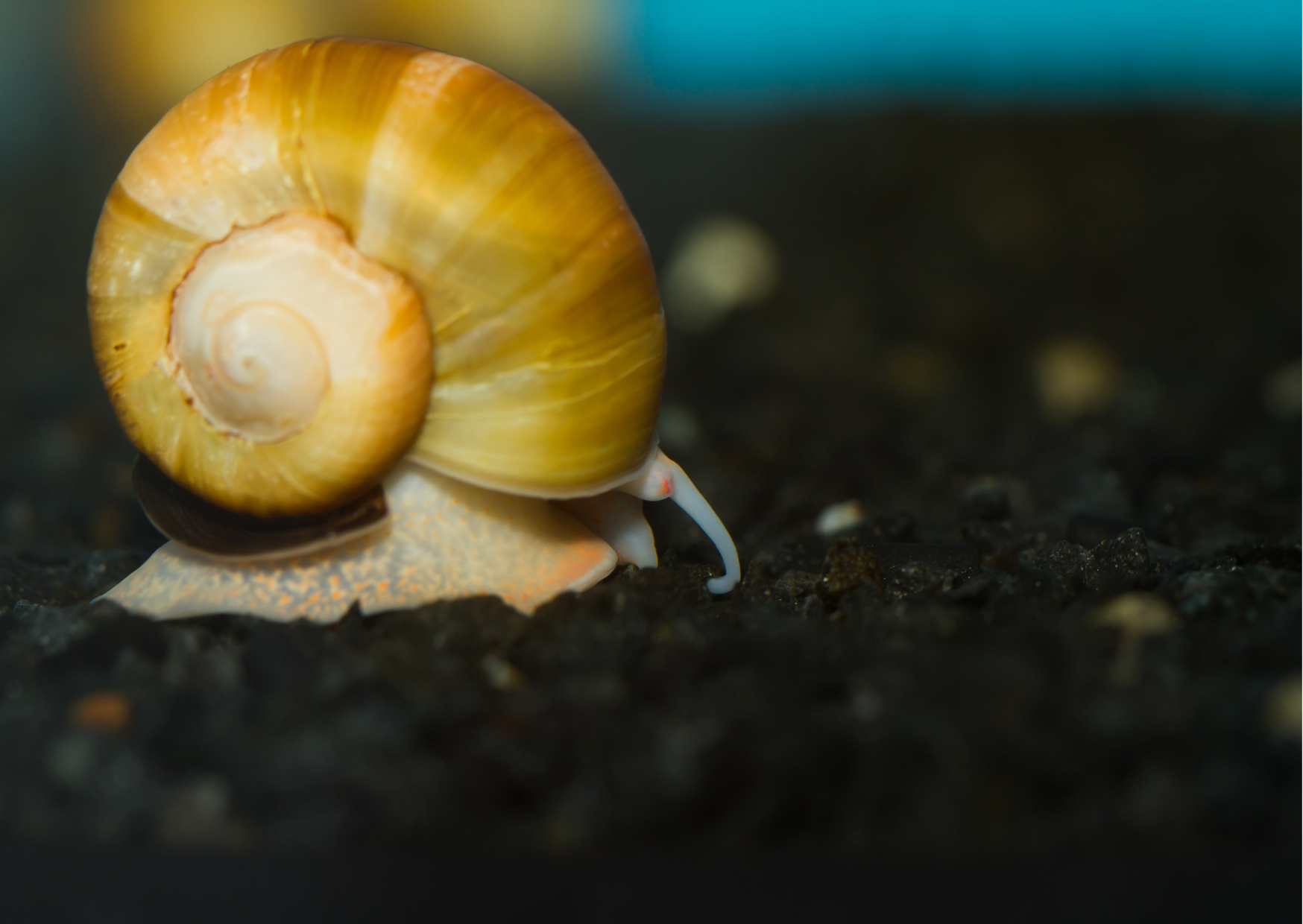Next working day delivery with Royal Mail Tracked 24
Fish Profiles: Apple Snail / Pomecea bridgesii

Fish Profiles: Apple Snail / Pomecea / Mystery Snails
Shell patterns and colour variations can be common with apple snails, with some appearing in solid gold, yellows and browns, to speckled yellow and brown. Apple snails can exhibit impressive growth - reaching the same size as an apple, hence the name.

Are Apple Snails illegal in the UK?
The Apple snail, also known as the Mystery Snail, and most species of Pomacea mollusc in the family Ampullariidae, were found to be causing ecosystem issues in Spain and were classified invasive by the EU in 2011. They were subsequently banned for sale in the United Kingdom and the European Union. However from early 2021, thanks in part to OATA lobbying and "Brexit", the apple snail is no longer banned in the UK, and this popular favourite is once again available for aquarium stockists to retail. (Data current as of Oct 2024)
How big do Apple Snails get?
Apple snails, or Mystery Snails, will commonly grow to a maximum size of around 4-5" inches in captivity, or about the size of an apple. Some species varieties however have been known to grow to exceed 6" inches. Growth can depend on factors like diet and temperature, it is often believed that keeping Apple Snails in the higher temperature range encourages growth (and breeding).
Are Apple Snails aggressive?
Apple snails are peaceful and will not act aggressively towards any species of fish or shrimp. It is often mistaken, because they scavenge and feed on the carcasses of dead fish, that the snail has killed the fish. Apple and Mystery snails will not attack active fish or shrimp. Care must be taken not to house with snail-killers however, such as assassins or loaches, because they are still vulnerable to predators themselves.
Features
Average purchase size: 3-5cm (small) / 1-2"
Maximum size: 15cm / 6"
Family: Ampullariidae
Origin: USA, Central and Southern America, West Indies
Ideal number kept together: 1+ (2 for breeding)
Water conditions
Our conditions: temp 22°C, pH 7.5
Ideal pH: 6.0-8.0
Ideal temperature: 18 – 28 °C
Ease of care
Apple snails are relatively easy to look after once acclimatised. Require plenty of vegetation to feed, and an aquarium big enough to accomodate growth. They will lay eggs around the hood or lid of your aquarium and have the potential to escape if not managed.
Diet
The food of choice would be an algae supplement, small or large algae wafers. A calcium block will help strengthen the shells. Apple snails will eat voraciously, so their diet should be supplemented with plenty of greens, such as courgette and spinach. Use organic vegetables to avoid potential harmful pesticide exposure.
Compatibility
Some aquarium species will eat apple snails, including puffers, loaches (such as the clown loach or any other member of the genus Botia), bettas, crayfish, and most gouramis. Assassin snails will also prey upon apple snails. Good fish tank mates for snails include danios, guppies, White Cloud Mountain minnows, neon tetras, and corydoras catfish. All of these are non-aggressive fish that cohabit easily with snails.
Breeding / Sex
Prolific. This family is considered to be gonochoristic unlike some other snails. which means that in order to breed, a male and female apple snail are needed. When mating, male and female will join each other and the male is always on top. After the breeding is over the female leaves the tank water and lays a number of pink eggs above the water surface (see photos) This remarkable strategy of aquatic snails protects the eggs against predation by fish and other aquatic inhabitants.
Life Span
Apple Snails can live up to 10 years in perfect aquarium conditions.
To browse our range of snail products online please click here.
To browse our range of Tetra branded products please click here.
Photo credit(s): M Chinnery




